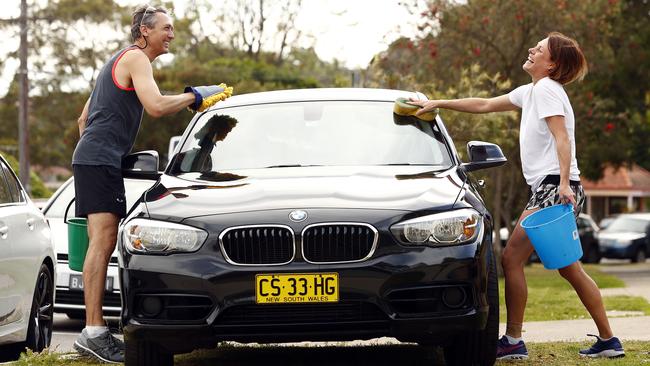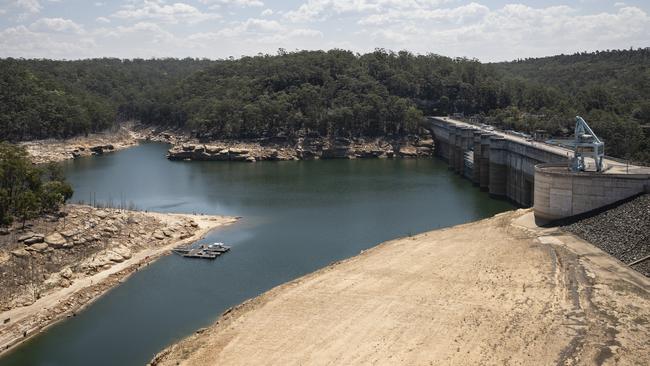Hunters Hill residents waste the most water, despite drought
Country towns at the coalface of the drought are drastically slashing water consumption, but the message isn’t getting through to residents in harbourside homes.
NSW
Don't miss out on the headlines from NSW. Followed categories will be added to My News.
- Schapelle, Cher and I: ‘The day I sat down with Corby’
- Paul Gallen and peptides: What really happened
Wealthy Sydney suburbs with plush gardens and sprawling lawns have been exposed as using the most water despite restrictions and the city’s dams dropping at the fastest rate in decades.
The city’s worst water-wasters live in Hunters Hill, Gladesville and the lower north shore’s Woolwich, as well as well-heeled Woollahra and Ku-ring-gai.
Water usage figures obtained from Sydney Water reveal properties in the Hunters Hill council area use more than twice as much water as properties in the North Sydney council area.
Sydney Water has issued 105 warnings to people caught flouting the water restrictions since they came into effect on June 1.

People who used sprinklers or hoses without trigger nozzles to water their lawns and gardens accounted for a quarter of the warnings.
Those caught hosing hard outdoor surfaces, including concrete driveways and footpaths, accounted for another quarter.
Other common breaches include watering lawns in the heat of the day between 10am and 4pm (11 per cent) and washing cars with hoses (9 per cent).
A three-month grace period ended on September 1, but so far Sydney Water hasn’t meted out a single penalty, which are $220 for residences and $550 for businesses.
Cremorne mum Lana Ledgerwood lives in Sydney’s most waterwise neighbourhood and takes water restrictions so seriously that her seven-year-old son Bede Galletta takes a bucket into the shower to save water for their vegetable garden.
“We are absolutely cognisant of the restrictions,” she said. “I feel bad about washing my car, even though I only do it every eight weeks, use a bucket and do it on the lawn so the grass gets water.
“My seven-year-old turns the shower off while he suds up and then turns it back on to rinse off, since he learned about the farmers (experiencing drought) at school.”

READ MORE BY JACK MORPHTT
NSW’s first new dam to be built in 30 years
Day zero: The dates rivers and dams
Drought forces town to recycle sewage for drinking water
Sydney’s dams sit at 47.9 per cent capacity. They have been steadily dropping by 0.3 per cent a week since October 2018. That rate would see the city’s main source of water run dry between October 2021 and January 2022 without significant rainfall or government intervention.
Residents and businesses west of the Great Dividing Range, where rivers and dams are tipped to run dry within weeks and months, are curbing their water use by unprecedented amounts.
Orange in the state’s central west is on emergency level-five water restrictions, meaning residents can only water the garden for one hour a week using sprinklers and soaker hoses, and there’s a blanket ban on washing cars at home and filling swimming pools, including inflatable pools. The target water usage under level-five restrictions is 160 litres per person per day, but residents in Orange are only using 133 litres per person per day.

It’s a similar story in the Lower Hunter Valley, where residents have reduced consumption by 12 per cent since water restrictions were introduced five weeks ago for the first time in 25 years.
The saving in the Lower Hunter Valley, which includes towns such as Cessnock and Singleton, equates to 38,000 homes disappearing from the grid.
“We all need to do our bit to conserve the water we have,” NSW Water Minister Melinda Pavey said.
“Sydney needs to look at what the Hunter is doing to conserve water. We can, and should, all do better in our efforts to save water.”
Originally published as Hunters Hill residents waste the most water, despite drought

